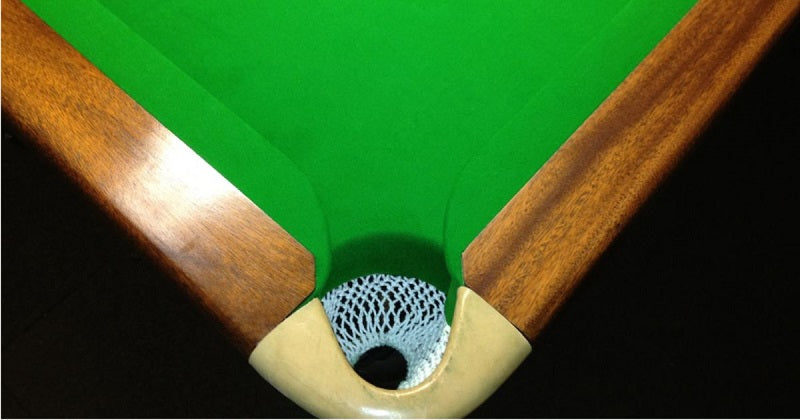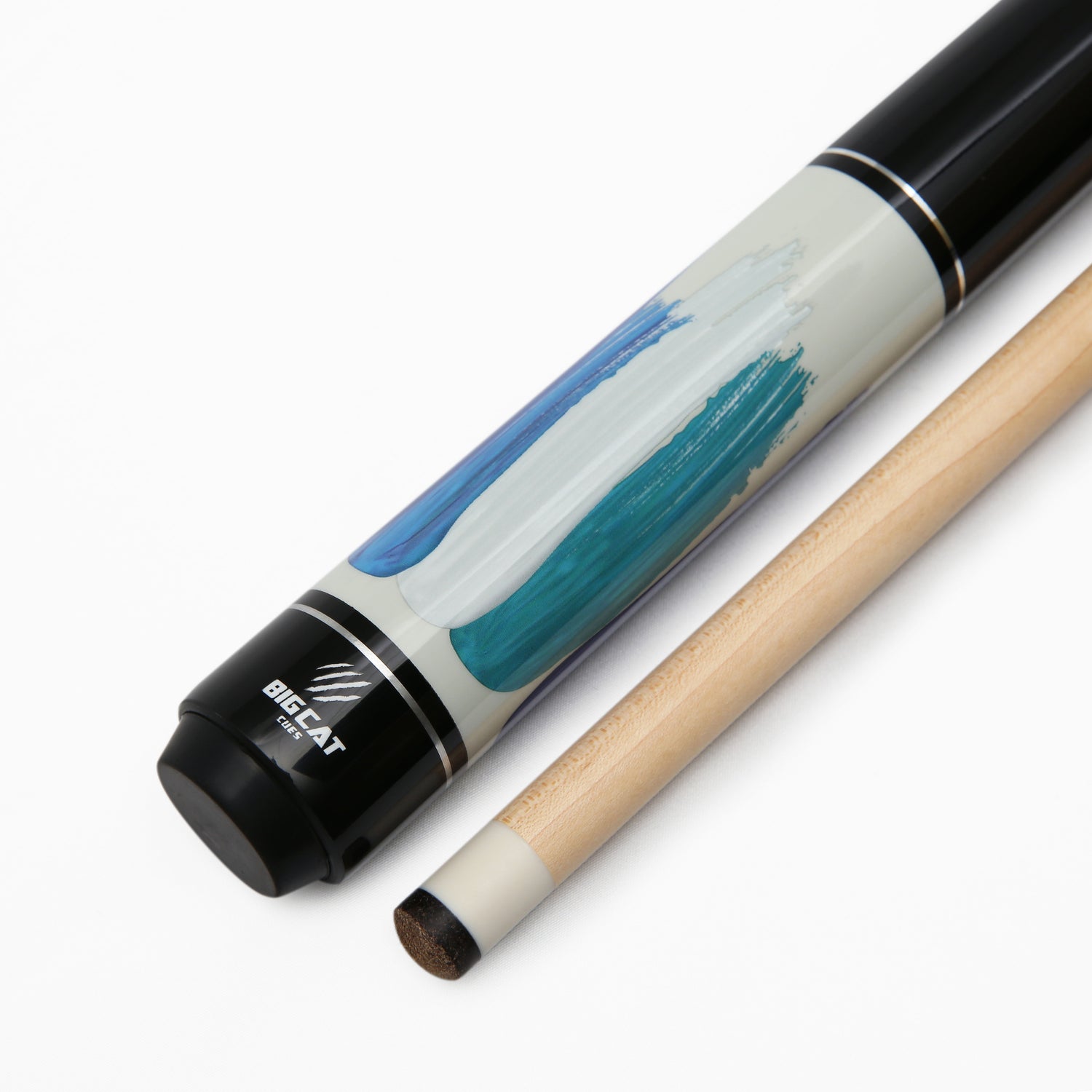
How to Soften Pool Table Bumpers? 5 Easy Ways You May Not Know
Pool table bumpers are rubber covers on each side of the pool table, which are vital parts of a pool table and essential to the game. They control the ball's path and offer consistent cushioning. However, bumpers can harden, lose their elasticity, or develop dead spots over time, causing irregular bounces and unpredictable gameplay.
This article will show how to soften pool table bumpers in 5 easy ways to protect your game efforts.
Why Should You Soften Pool Table Bumpers?
There are five main reasons why you should soften pool table bumpers as follows:
1. Pool Table Protection
Whether a DIY pool table or a ready-made one, pool tables cost around $1,200 to $3,500. They are made of susceptible materials, mainly wood. If not properly maintained, the wood is prone to damage, and your table could quickly become unusable.
Bumpers can prevent the wood from breaking, cracking, or warping. Additionally, they stop the balls from bouncing off the table and onto the ground, which could harm both. Therefore, softening the bumpers may help you extend the lifespan of your table.
2. Noise Reduction
Soft bumpers can reduce noise during gameplay. Without it, the cue ball, when striking the rail, can make a loud, jarring, unpleasant sound. The soft bumpers can absorb the cue ball's impact, generating less noise.

3. Excellent Rebounce
Soft bumpers on a pool table are essential since they can offer superior rebounds. If you've ever played pool on a table without soft bumpers, you know how annoying it can be when the cue ball does not properly bounce off the rails. Playing when the cue ball bounces off the rails as it should is considerably more pleasurable.
4. Consistent Speed
Consistent speed is one of the pool's most crucial features. You will find it easier to maintain a constant speed playing on a table with soft bumpers.
The bumpers ensure the cue ball bounces off the rails correctly, making regulating the game's speed more straightforward. Soft bumpers will be extremely beneficial if you try to set up a shot or make a tricky one.
Therefore one of the essential reasons is to remember how to soften pool table bumpers to get a more accurate shot.
5. Rails Protection
A pool table must have soft bumpers to protect the rails. There is a possibility that the rail will break or chip when the cue ball strikes it without a soft bumper. Thus, to best avoid the pool table from further damage, soft bumpers are essential.

How to Soften Pool Table Bumpers?
There are several ways you can use to soften pool table bumpers, but we have found five easiest ways you can try yourself.
1. Protection Against Harsh Elements
Protecting your bumpers from acidic substances and direct sunshine is one of the tactics to keep them in good shape. Chemicals can harden and dry out the substance. The material may degrade and become brittle due to sunlight. Be sure to carefully cover any outdoor tables when not in use.
A bumper guard for a pool table is another option. You can use this transparent film to cover the bumpers. As a result, you can shield the bumpers from harm and preserve them in good condition.

2. Vacuum And Clean The Felt Regularly
You might be surprised by how much dirt your pool table's felt covers can hold, which significantly impacts the bumpers in long-term
Cleaning your felt cover with a vacuum regularly will help you stop this. Set the lowest setting of suction on your hand vacuum before using it. You can use an attachment without any bristles to help your bumpers and felt last longer, saving you costs in the future.
Sometimes, you need to refelt the pool table to ensure proper protection for the bumpers.

3. Regularly Clean The Cue Balls
Additionally, it would be best to clean your pool balls regularly from any mud or fifth to avoid them being unsuitable for play. To clean the cue balls, combine a mild soap and water solution. Make sure they are completely dry before playing.
4. Regulate Temperature
The room's temperature may also impact pool table bumpers. The material may become stiff and difficult to play on if it is too cold. Too much heat might cause the material to become sticky and make controlling the cue ball challenging. So how to soften pool table bumpers? The ideal temperature for the room is one where the bumpers are neither too hard nor too soft. Keep it between 65 and 70 degrees Fahrenheit.
5. Check On Humidity Levels
Billiard table bumpers also are affected by the humidity levels in the space. The material gets soft and sticky if the humidity is too high. Or becoming stiff if they are too dry.
To prevent the bumpers from being either excessively hard or too soft, it is ideal to maintain a comfortable amount of humidity in the space, around 50-55%.
How to Inspect the Bumpers?
Inspecting the bumpers is necessary to evaluate their condition, so you use appropriate methods to fix it. You can do a hand test, BCA test, bounce test, or feel test.
Hand Test
The Hand Test involves pressing cushions with your fingertips every 2 to 3 inches. This approach offers you a good picture of the bumper's state. A working product only allows you to press it by 1/4 inch. Additionally, you cannot push high-quality bumpers any tighter than an eighth of an inch.
A well-performed bumper gives the feeling of working with sturdy, springy rubber. Then, it's time to consider a replacement if you could touch the wood surface. Replace a damaged cushion right away without holding off. Older cushions will eventually harm newer ones.
BCA Test
The Billiard Congress of America (BCA) test is another proper technique for determining whether a pool table bumper needs replacement due to damage.
According to the BCA test, bumpers working at their best enable you to shoot a cue ball from the head to the foot spot. You need to make a powerful stroke with a good pool cue. Maintaining the ball's center must be your main priority. Ensure the ball travels four times the whole length of the pool table. Consider replacing the bumper if it doesn't work that way.
Bounce Test
Rolling a ball through the rails is another test you can carry out. A quick bounce back onto the pitch is ideal for the ball. If the ball comes to a stop and this doesn't happen, the bumpers may be malfunctioning.

Feel Test
Run your fingertips around the table from below the rails to the edge. The bumpers' intersection and ascent onto the playing surface is the place you are touching.
Run your fingertips through to find worn areas between the cushion and the table. If there is, it's a sign to repair your bumpers.
Frequently Asked Questions
How Long Do Pool Table Bumpers Last?
A top-notch pool table bumper has a 25-year lifespan on average. A bumper may endure more than 30 to 40 years with proper maintenance. Therefore, you must pick a trustworthy product that provides the ideal balance of quality and longevity.
How Do I Know If My Pool Table Bumper Is Bad?
There are numerous techniques to determine whether pool table bumpers are poor quality. You can examine and test them yourself, or you can engage a specialist. These tests can range from simple to complex, which have been described above in detail, including:
- Hand Test
- Feel Test
- BCA Test
- Bounce Test
When Should Pool Table Bumpers Be Replaced?
- Your Bumpers Are More Than 20 Years Old: Good bumpers can last up to 20 years or longer. However, even the best pool bumpers eventually lose effectiveness at about that time. Therefore, you should replace it as soon as your bumpers (even the high-quality ones) reach the 20-year mark.
- There Is Noticeably Less Bounce: To best evaluate, check how the bumpers function. No matter how old your bumpers are, replace one if you see a noticeable decline in the bounce they appear.
- The Bumpers Look Worn-Out: If the bumpers are in a worn-out status that detracts from the aesthetics of your pool table and the space it serves as decor, it's time to change.
Do Pool Table Bumpers Wear Out?
Yes, pool table bumpers can wear out over time. They are the padded edges made from rubber that run along the playing surface of a pool table. This type of material can be easily affected by many factors, such as temperature, humidity, sunlight, etc.
In general, understanding how to soften pool table bumpers can bring you tremendous benefits. Maintaining bumpers in good condition can lengthen their lifespan, which helps you get the most out of your investment and reduces costs for replacement. Elevate your best results in every gameplay with a properly softened pool table bumper! Feel free to Big Cat, if you have any questions.
See more related articles:


